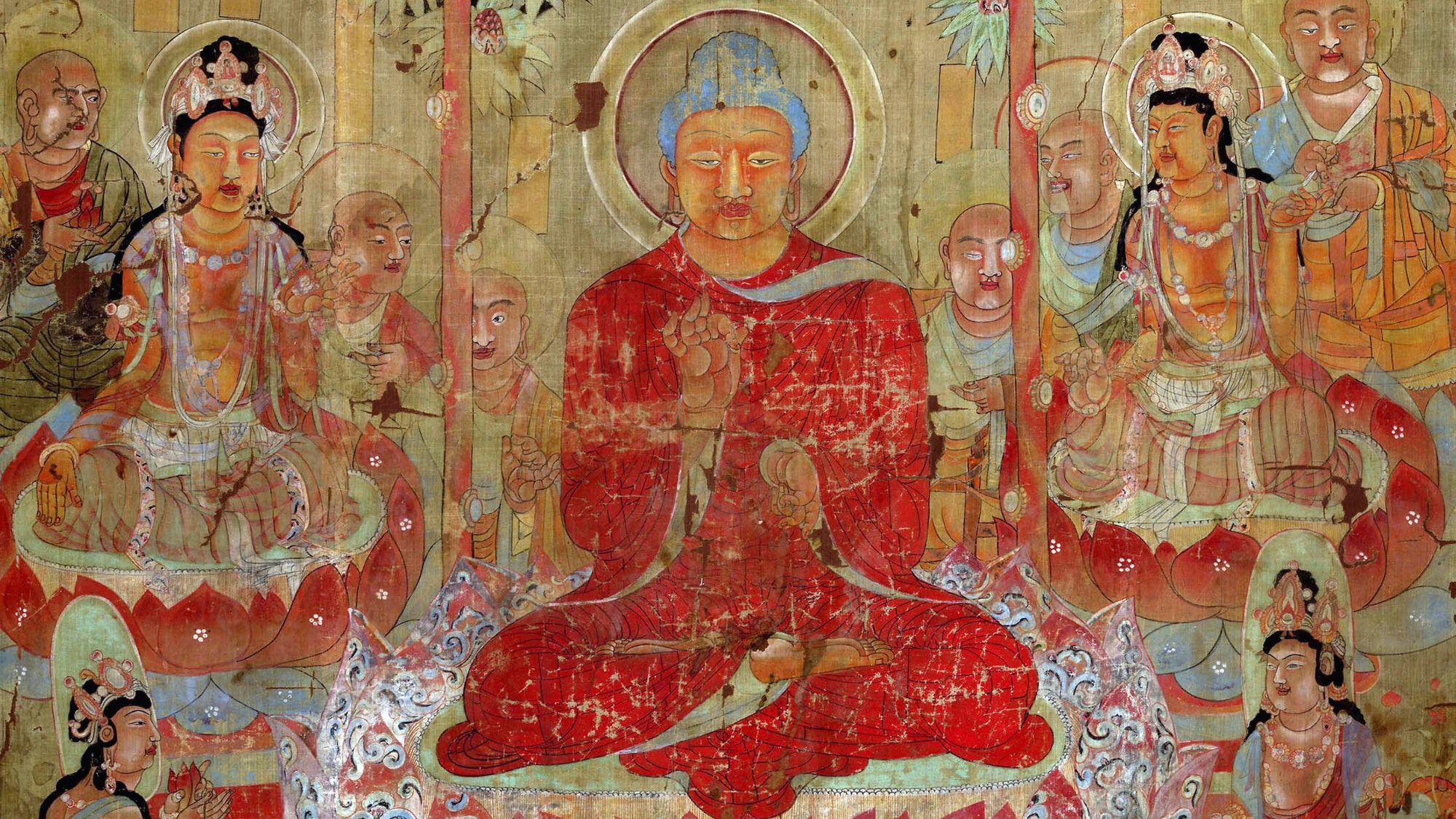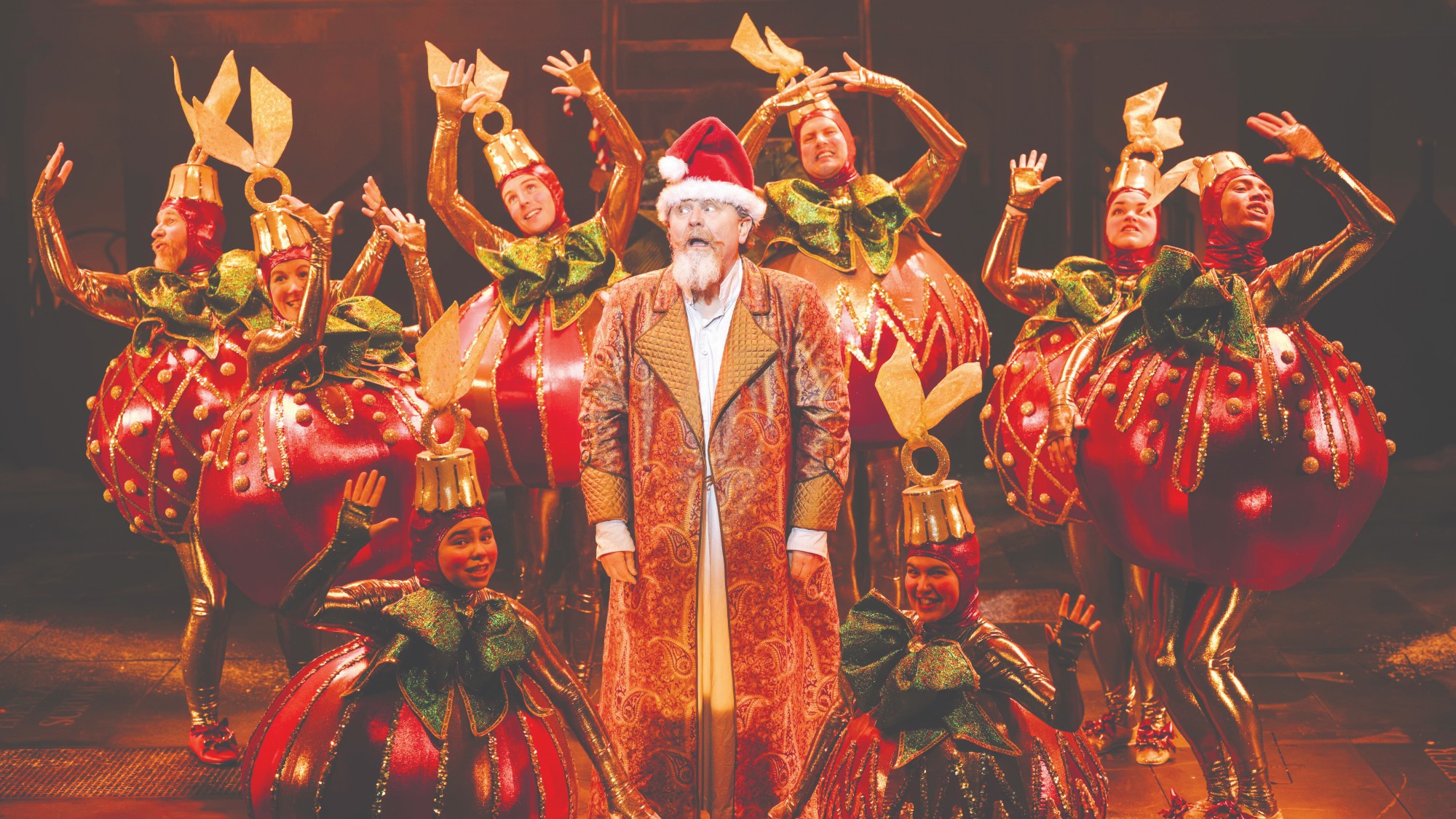Ancient India: living traditions – 'ethereal and sensual' exhibition
Hinduism, Jainism and Buddhism are explored in show that remains 'remarkably compact'

About 2,000 years ago, art on the Indian subcontinent underwent "a stunning transformation", said Jonathan Jones in The Guardian.
Where it had previously been "enigmatically abstract", it started to become "incredibly accomplished at portraying the human body – and soul". This extraordinary cultural development, pioneered by Buddhist artisans, is the subject of this exhibition at the British Museum, which examines the region's devotional art reaching back more than 2,000 years, and tells "a passionate story about the three great religions of ancient India – Hinduism, Jainism and Buddhism – and their vitality across time".
Featuring around 180 objects (sculptures, paintings, manuscripts and drawings), it is filled with treasures, from a miraculous statue of the elephant-headed Hindu deity Ganesha to a silk painting of the Buddha "set in a dreamworld of deep reds and greens". All three faiths are, of course, still practised by millions worldwide today: videos of contemporary worshippers help to "blast the museum dust off" this ancient art, and give a "sense of its living power". "Ethereal and sensual", this is a fabulous event.
The Week
Escape your echo chamber. Get the facts behind the news, plus analysis from multiple perspectives.

Sign up for The Week's Free Newsletters
From our morning news briefing to a weekly Good News Newsletter, get the best of The Week delivered directly to your inbox.
From our morning news briefing to a weekly Good News Newsletter, get the best of The Week delivered directly to your inbox.
Given its vast geographical scope, the show feels remarkably "compact", said Nancy Durrant in The Times. Separated into four sections and "accompanied by a soundtrack of temple bells and birdsong", it shows how imagery initially developed in the worship of "nature spirits" worked its way first into Jainism, then Buddhism – both of which appeared in India about 2,500 years ago – and finally into Hinduism.
The objects themselves are "gorgeous": we see much "lively, expressive, dynamic sculpture", from "rudimentary" yakshas and yakshis (small terracotta statuettes of male and female spirits), to a "skilful, intricate" depiction of a Jain goddess of knowledge "wielding a pen and a palm-leaf manuscript".
The "rich devotional art" of any of these three religions could easily merit its own show, said Alastair Sooke in The Telegraph. It's a shame, then, that they have been bundled into a single package here, in a way that is often confusing. The contextual notes fail to address "simple, nuts-and-bolts questions". We don't learn why the Buddha was frequently depicted with "elongated ears" or, in the early days, using symbols such as footprints; nor why female deities were sometimes represented "semi-nude" even when wielding objects associated with knowledge.
Elsewhere, important subjects – such as the art of Gandhara in present-day Pakistan and Afghanistan, where a "fascinating fusion" of Greco-Roman and south Asian influences took hold – are "short-changed". Unfortunately, though the subject matter is fascinating, "this isn't, by any stretch, a vintage show". I left feeling "frustrated, disappointed, even cross".
A free daily email with the biggest news stories of the day – and the best features from TheWeek.com
-
 Political cartoons for December 20
Political cartoons for December 20Cartoons Saturday’s political cartoons include drowning rats, the ACA, and more
-
 5 fairly vain cartoons about Vanity Fair’s interviews with Susie Wiles
5 fairly vain cartoons about Vanity Fair’s interviews with Susie WilesCartoon Artists take on demolition derby, alcoholic personality, and more
-
 Joanna Trollope: novelist who had a No. 1 bestseller with The Rector’s Wife
Joanna Trollope: novelist who had a No. 1 bestseller with The Rector’s WifeIn the Spotlight Trollope found fame with intelligent novels about the dramas and dilemmas of modern women
-
 Joanna Trollope: novelist who had a No. 1 bestseller with The Rector’s Wife
Joanna Trollope: novelist who had a No. 1 bestseller with The Rector’s WifeIn the Spotlight Trollope found fame with intelligent novels about the dramas and dilemmas of modern women
-
 Appetites now: 2025 in food trends
Appetites now: 2025 in food trendsFeature From dining alone to matcha mania to milk’s comeback
-
 Man vs Baby: Rowan Atkinson stars in an accidental adoption comedy
Man vs Baby: Rowan Atkinson stars in an accidental adoption comedyTalking Point Sequel to Man vs Bee is ‘nauseatingly schmaltzy’
-
 Goodbye June: Kate Winslet’s directorial debut divides critics
Goodbye June: Kate Winslet’s directorial debut divides criticsTalking Point Helen Mirren stars as the terminally ill English matriarch in this sentimental festive heartwarmer
-
 A Christmas Carol (or two)
A Christmas Carol (or two)The Week Recommends These are the most delightful retellings of the Dickens classic from around the country
-
 ‘Capitalism: A Global History’ by Sven Beckert and ‘American Canto’ by Olivia Nuzzi
‘Capitalism: A Global History’ by Sven Beckert and ‘American Canto’ by Olivia NuzziFeature A consummate history of capitalism and a memoir from the journalist who fell in love with RFK Jr.
-
 Frank Gehry: the architect who made buildings flow like water
Frank Gehry: the architect who made buildings flow like waterFeature The revered building master died at the age of 96
-
 6 lovely barn homes
6 lovely barn homesFeature Featuring a New Jersey homestead on 63 acres and California property with a silo watchtower